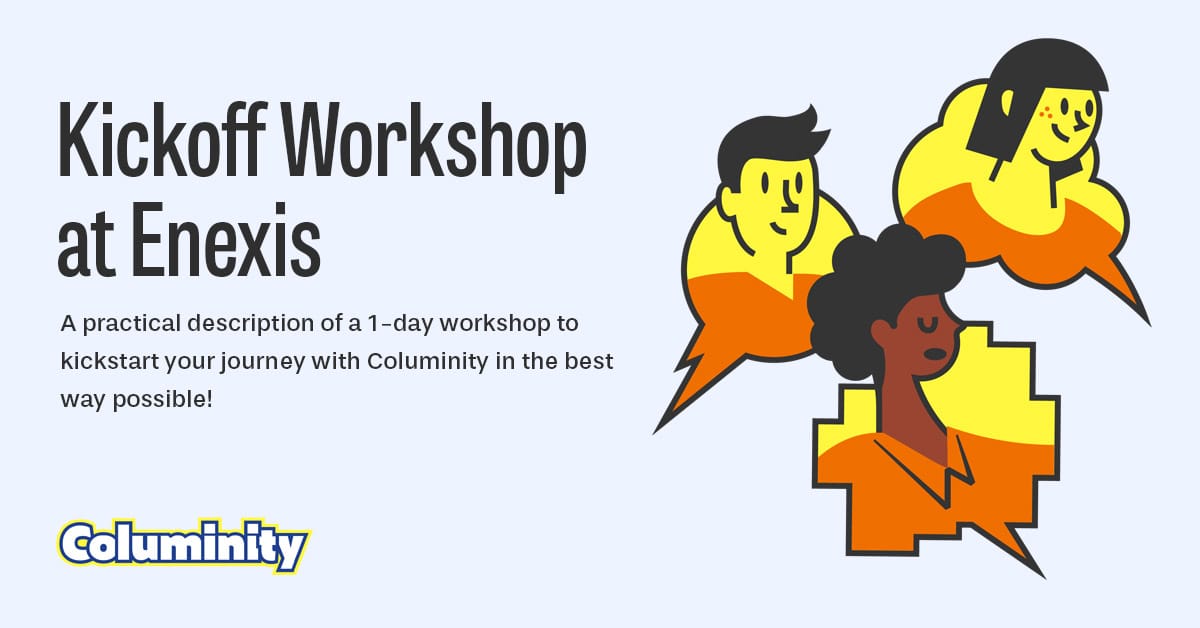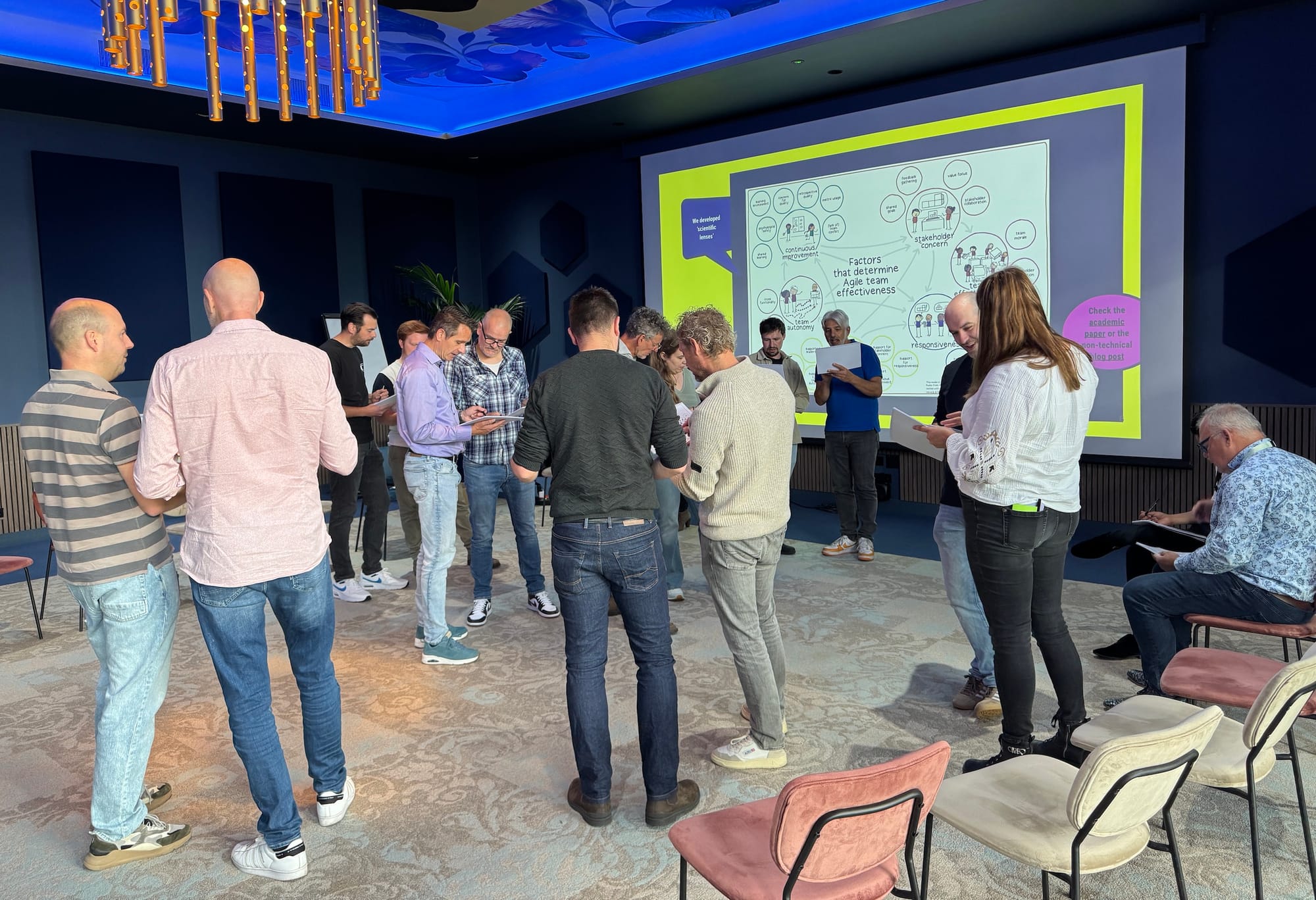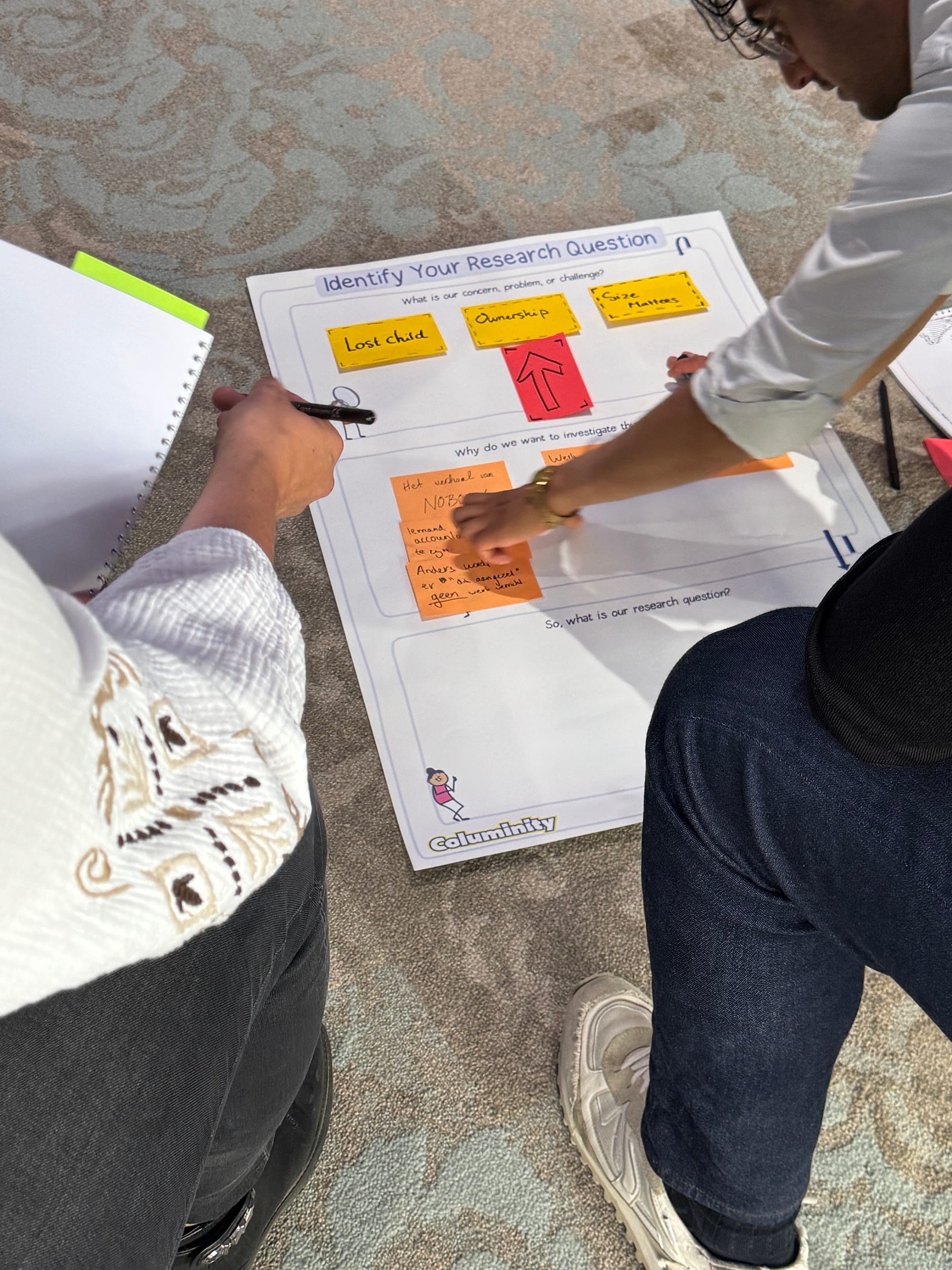Kickoff Workshop at Enexis
A practical description of the 1-day Columinity kickoff workshop we facilitated at Enexis.

Columinity improves team and organizational effectiveness through data-informed decisions and scientific insights. You can diagnose one or many teams, receive evidence-based feedback, and resolve broader organizational issues. It helps to make decisions based on quantitative and qualitative data and insights from research, instead of only on gut feeling, opinions, or intuition.
This week, I facilitated the first Columinity Kickstart workshop at Enexis. Enexis is a Dutch energy network operator that manages the electricity and gas distribution grids in the northern, eastern, and southern Netherlands. They ensure a reliable energy supply to millions of households and businesses while also upgrading the grid to accommodate more renewable energy sources, such as solar, wind, and green gas.
The workshop was the first in a series of 3 to 4 sessions where we’ll introduce all 75–100 Scrum Masters, Agile Coaches, and Release Train Engineers to what Columinity has to offer. Eventually, the goal is to start using Columinity with 80-100 teams!
Overall, our purpose with the workshop is to have everyone...
🎯 Understand WHY it's essential to improve teams through conversations based on data and scientific insights.
🎯 Experience WHAT this looks like in practice with Columinity and how it uses scientific insights to support change in teams and organizations.
🎯 Learn HOW teams and organizations can use Columinity to perform Action Research - a collaborative, data-informed process to identify challenges, take action, and reflect on results to trigger continuous improvement and learning.
In this blog post, I describe the outline of the one-day kickoff workshop. The program isn't set in stone and is tailored to each customer, but it provides an idea of what to expect: an interactive experience filled with valuable conversations.
Part 1 – Why Columinity?
Timeslot: 9:30 - 10:00
Years ago, Christiaan Verwijs created the Zombie Scrum Health Check, which eventually led to our book, the Zombie Scrum Survival Guide. What started as a focused effort to help Scrum teams diagnose stagnation quickly grew into something larger. Its broad adoption got us thinking — and building.
First came the Scrum Team Survey, offering deeper insights and team-specific feedback. However, we realized the underlying patterns applied far beyond Scrum. Now, Columinity has evolved into an agnostic, broadly applicable product designed to improve team and organizational effectiveness.
Columinity helps organizations make better decisions by combining data, science, and real-world team dynamics. It’s designed to go beyond frameworks and provide clarity where complexity often clouds progress.

Part 2 – What is Columinity?
Timeslot: 10:00 - 10:30
Columinity offers three scientific models to provide insight into Agile Team Effectiveness, Teamwork Quality, and the Agile Mindset. These models were developed in collaboration with Christiaan Verwijs, Prof. Dr. Daniel Russo, and Dr. Karen Eilers.
By combining academic research with practical team experience, Columinity translates complex concepts into actionable insights. Each model highlights a different but complementary angle of team dynamics, allowing teams to pinpoint what’s working—and what’s not.
This structured approach provides organizations with a deeper, more holistic view of effectiveness than surface-level metrics or gut feelings can ever offer.
Part 3 – Filling in the Kickoff Canvas
Timeslot: 10:45 - 12:00
Here, we tackled questions like: What’s your goal with Columinity? Who do you see as team members, stakeholders, and supporters? How will you smoothly integrate Columinity into your current way of working? How often will you use it? And which principles are essential to earning teams’ trust?
This part of the workshop sparked thoughtful conversations about ownership, cadence, and how to introduce the tool in a way that feels natural—not forced. By clarifying intent early, teams are much more likely to engage meaningfully and sustain the process over time.

Part 4 – Demo
Timeslot: 13:00 - 13:30
So, how does it work in practice? In just 30 minutes, we walked through the key features of Columinity. Without getting too technical, we showed how it helps teams have more grounded conversations and enables organization-wide change in a structured way.
The demo made it tangible—how data flows from surveys to insights, how patterns are visualized, and how teams can take real action based on what they learn. We highlighted how Columinity bridges individual team experiences with broader organizational goals. The aim wasn’t to impress with features but to show how it fits into everyday work and sparks better, more focused dialogue.
Part 5 – Diagnosing a Demo Team Report
Timeslot: 13:30 - 15:30
Using a demo report, we followed the steps of Action Research — the approach on which Columinity is based. Action Research means starting with data, reflecting together, and turning that into concrete actions. It’s a cyclical, purposeful way to develop teams and organizations grounded in scientific insights.
We guided participants through identifying patterns, asking critical questions, and interpreting the results in the team’s context. This hands-on part showed how insights aren’t the end point—they’re a catalyst for change. By practicing with a safe, fictional example, teams saw how the process works without pressure, building confidence to apply it in their own setting.



Part 6 – Questions & Answers
Timeslot: 15:30 - 16:00
The final part was open to questions, doubts, and concerns. It provided us with valuable insights into how Columinity integrates into participants' day-to-day work. Together, we also shaped what’s needed to support teams well as they start using it.
This open dialogue surfaced practical needs, potential friction points, and ideas we hadn’t considered. It also gave participants a chance to share how Columinity could fit their context. It was a reminder that tools don’t create change—people do, when they feel heard, supported, and involved from the start.
Closing
The energy during the workshop left me genuinely optimistic about how Columinity will take root at Enexis. From the start, there was a strong sense of curiosity and commitment in the room. People asked thoughtful questions, challenged assumptions, and connected the dots to their own teams.
With Jaap Mintjes and Kjell Pater leading the way—and a motivated group ready to build on it—the foundation is solid, and the potential is clear.
Curious about Columinity or interested in running a similar workshop at your organization? I’d love to chat—just reach out!
Interested in running this kickoff workshop or the follow-up workshop "Action Research with Columinity" in your organization? Get in touch to explore the options: info@columinity.com.


